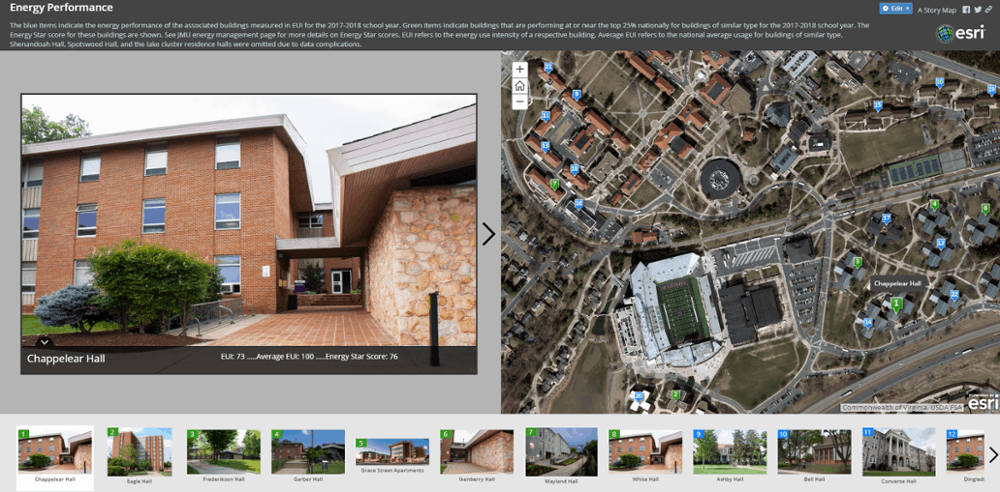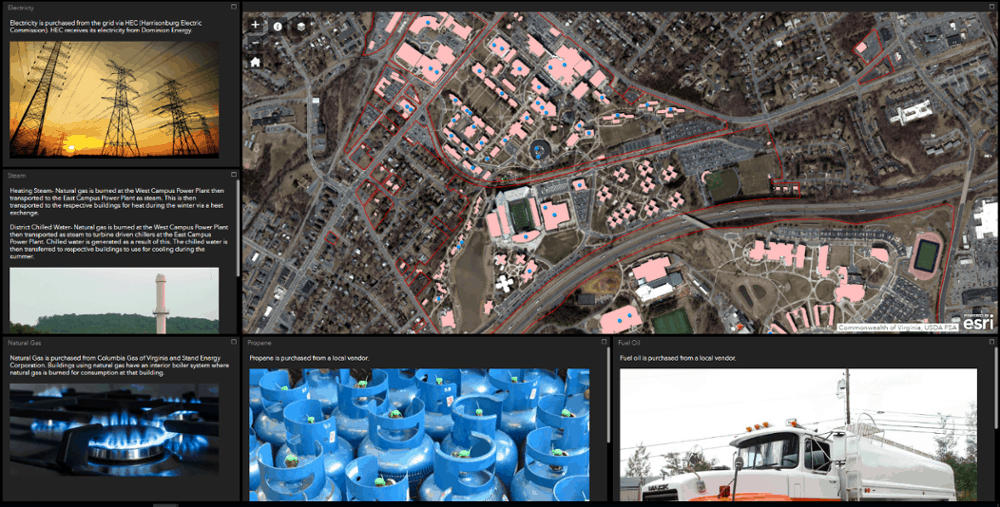Reducing energy on JMU campus is a major priority in Facilities Management's sustainability plan. The university's guidelines for reducing energy on both an individual and management level are outlined in JMU Policy 1704. Benchmarking, commissioning, and energy auditing are a few avenues Facilities Management has undertaken or is exploring to assess energy usage on campus. All new construction and major renovations are required to be LEED certified (see JMU LEED certified buildings) or alternative green building rating systems: Green Globes and VEES. For more information on JMU new construction and renovations policy, view Policy 1703. In addition, Facilities Management has and will continue to engage in small maintenance projects for existing buildings that will assist in maximizing energy performance. These include LED retrofitting, boiler replacement, and chiller replacement. Beginning in January of 2018, the Engineering and Sustainability department in Facilities Management began tracking such projects using GRITS, a sustainable project-tracking tool sponsored by the Sustainable Endowments Institute.
Below is a live embedded dashboard from GRITS that shows estimated energy savings and CO2 reduction from maintenance projects undertaken by JMU since the beginning of 2018. Click on links below for more details on these projects.
2017
Chiller Replacement (Music Building)
2018
Boiler Replacement (Memorial Hall)
2019
Boiler Replacement (Bell Hall)
Building Setback (Madison Hall)
Building Setback (Showker Hall)
Chiller Replacement (Jackson/Harrison Hall)
HVAC Replacement (Anthony Seeger Hall)
HVAC Replacement (Hillcrest House)
HVAC Replacement (Mike Mart(JMAC))
LED Retrofit (Champeons Parking Deck)
LED Retrofit (East Campus Lighting)
2021
Energy Performance
Sustainable energy performance at JMU is best evident at residence halls. 61% of residence halls at JMU are more energy efficient than average residence halls nationally. This was based off guidelines and metrics set forth by the EPA.
The web map below is an interactive map that shows three main themes: (1) Energy performance for each residence hall (2) Residence halls at JMU that are performing at or near the top 25% nationally.
Energy performance is measured using site energy and site EUI (Energy Use Intensity). Site energy is the annual amount of all the energy a property consumes onsite, as reported on utility bills. Site energy shows how the energy use for an individual property has changed over time. Site EUI is a method to compare energy usages of similar building types regardless of size. This is achieved by normalizing the total site energy usage (kBtu) by the buildings square footage size. The EPA through its benchmarking platform Portfolio Manager, provides national and regional EUI's for several building property types. A building's energy performance can then be properly assessed based on its use type.
The EPA recognizes buildings performing in the top 25% (that is building performing 25% above average buildings of its kind) as high performing buildings. Energy star scores provided by Portfolio Manager indicate a building's performance in percentiles; for example, an energy star score of 50 indicates a building performing at the national average for buildings of its kind. A building with an energy star score of 75 or more is performing in the top 25% nationally for buildings of similar type. The web map below highlights residence halls at JMU performing close to or in the top 25% nationally (see map for more details).
Energy Sources
JMU uses a variety of fuel sources for energy generation. These sources are electricity purchased from the grid, natural gas, steam, chilled water, propane, and fuel oil. The map below gives more detailed information on each fuel type. It also shows building locations on campus where each fuel type is used. Steam and natural gas are used for heating during the winter and chilled water is used for cooling during the summer. A geothermal heat pump at Wayland hall is used to capture heat from the ground during the winter and redirect heat to the ground during the summer. For information on renewables at JMU, visit the CASE website.


